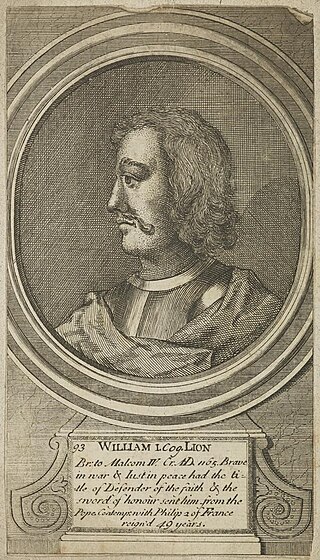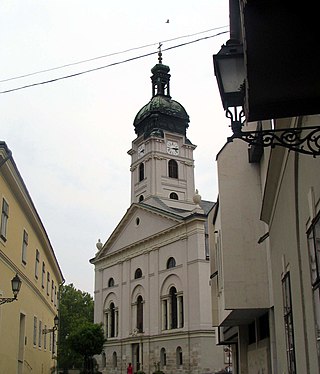Related Research Articles
William I may refer to:

William I the Lion, sometimes styled William I and also known by the nickname Garbh, 'the Rough', reigned as King of Alba from 1165 to 1214. His almost 49-year-long reign was the longest for a Scottish monarch before the Union of the Crowns in 1603.
Alexios I Komnenos was a Byzantine emperor (1081–1118).
William of Holland may refer to:
Simon de Montfort, 6th Earl of Leicester, known as Simon V or VI de Montfort, was an Anglo-French nobleman who led the rebellion against King Henry III.
Robert I may refer to:

The Kingdom of Jerusalem, one of the Crusader states that was created in 1099, was divided into a number of smaller seigneuries. According to the 13th-century jurist John of Ibelin, the four highest crown vassals in the kingdom proper were the count of Jaffa and Ascalon, the prince of Galilee, the lord of Sidon, and the lord of Oultrejordain.

There were six major officers of the kingdom of Jerusalem: the constable, the marshal, the seneschal, the chamberlain, the butler and the chancellor. At certain times there were also bailiffs, viscounts and castellans.

Fujiwara no Kanezane, also known as Kujō Kanezane, is the founder of the Kujō family, although some sources cite Fujiwara no Morosuke (908–960) as its founder.

The principality of Galilee was one of the four major seigneuries of the crusader Kingdom of Jerusalem, according to 13th-century commentator John of Ibelin, grandson of Balian. The direct holdings of the principality centred around Tiberias, in Galilee proper, but with all its vassals, the lordship covered all Galilee and southern Phoenicia. The independent Lordship of Sidon was located between Galilee's holdings. The principality also had its own vassals: the Lordships of Beirut, Nazareth, and Haifa.
The Abbot of Rievaulx was the head of the Cistercian monastic community of Rievaulx Abbey, founded in 1131 by Walter l'Espec in North Yorkshire, northern England. The Abbots of Rievaulx were amongst the most powerful Christian leaders in northern England until the dissolution of the monastery by Henry VIII of England in 1538.
The Abbot of Dundrennan was the head of the Cistercian monastic community of Dundrennan Abbey, Galloway. It was founded by Fergus of Galloway in 1142. Dundrennan was a large and powerful monastery in the context of the south-west. It became secularised and protestantised in the 16th century. In 1606 it was finally turned into a secular lordship in for John Murray of Lochmaben, afterwards earl of Annandale.

Robert I de Brus, 1st Lord of Annandale was an early-12th-century Anglo-Norman lord and the first of the Bruce dynasty to hold lands in Scotland. A monastic patron, he is remembered as the founder of Gisborough Priory in Yorkshire, England, in present-day Redcar and Cleveland, in 1119.
Robert II de Brus, le Meschin was a 12th-century Norman noble and 2nd Lord of Annandale. He was the son, perhaps the second son, of Robert de Brus, 1st Lord of Annandale.

The former French Catholic Diocese of Noyon lay in the north-east of France, around Noyon. It was formed when Saint Medardus moved the seat of the bishopric at Vermandois to Noyon, in the sixth century. For four centuries it was united with the bishopric of Tournai as the Diocese of Noyon–Tournai. Then in the twelfth century it was again independent, and the bishop of Noyon became a pairie-comté of France.

The Diocese of Győr is a diocese of the Latin Church of the Roman Catholic Church in Hungary. The diocese is suffragan to the Archdiocese of Esztergom-Budapest. The diocese is believed to have been established in 1009 by King Stephen I of Hungary, along with most of the other Hungarian dioceses.
Jayasimha may refer to:
References
- The Bruses of Skelton and William of Aumale, Yorkshire Archeology Journal (2001)